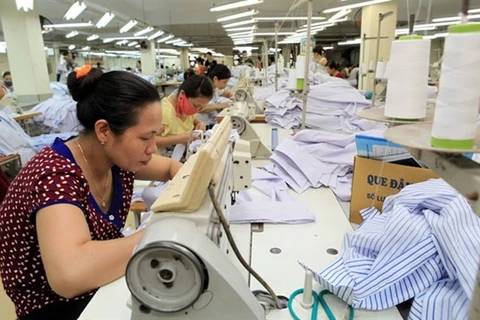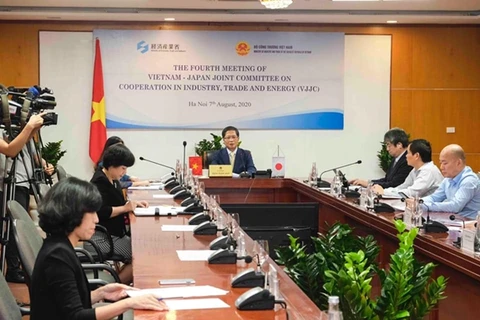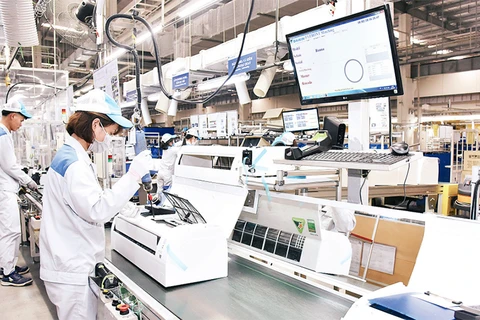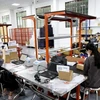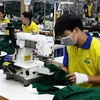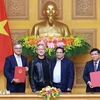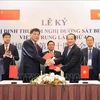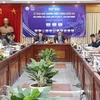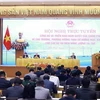HCM City (VNS/VNA) - Armed with experience from coping with the first wave of the COVID-19 epidemic, many textile and footwear enterprises are quietly confident they can alter their plans as required and find new markets to cope with the second.
The situation is worsening, according to most companies in the two sectors as the epidemic returns to Vietnam and continues to rage in many countries around the world.
Le Tien Truong, general director of the Vietnam National Textile and Garment Group, said that in the first six months of the year, though affected a great deal by the COVID-19 pandemic, his company sustained its operations and cash flows thanks to its decision to produce face masks and personal protective equipment (PPE).
But the situation would be very different in the second half since the demand for those products is shrinking rapidly, he said.
The fact that many manufacturers switched to producing PPE has seen supply shoot past demand, he added.
Since the global outbreak began in April, many Vietnamese garment and textile businesses have been told by their US and EU partners that they would temporarily stop taking delivery of goods.
Pham Xuan Hong, chairman of the HCM City Association of Garment Textile Embroidery and Knitting, said this was because governments in the US and EU have declared a state of emergency and tightened border controls due to the rapid spread of COVID-19.
“They have asked Vietnamese businesses to suspend delivery, including of those en route, until borders are reopened.”
He said the US and EU are two important textile export markets for the country, while half of all exports from HCM City go to the US and 15-18 percent to the EU.
“Partners in these markets have announced the suspension of deliveries, meaning the market for textiles and garments has narrowed by nearly two-thirds.”
Truong said developing the domestic market is the most feasible way to survive the pandemic.
Though the domestic market accounts for only 10 percent of the industry’s capacity and cannot fully mitigate the unemployment problem, it is still a solution, he said.
Support from the Government in the form of access to cheap credit and deferred tax payment is also imperative, he said.
Phan Thi Thanh Xuan, general secretary of the Vietnam Leather, Footwear and Handbag Association (LEFASO), too said though the domestic market is very small, developing it would be a key solution amid the difficulties in exporting.
Nguyen Van Mieng, general director of the Nam Dinh Textile and Garment Corporation, said companies have restructured their markets to sustain jobs. In the past, his company produced 1,100 tonnes of yarn and exported 65 percent of it, but has now cut it to 45 percent.
It produces around 1.2 million metres of fabric per month, but this is likely to decrease to 23,000-300,000 metres in the last two quarters of the year, he said.
The company is seeking to expand its market for new products in the north and taking advantage of dyed fabrics to sell finished products and supply to garment companies, he said.
It also wants to strengthen the yarn-weaving-dyeing links so that all companies in the chain could benefit, he added.
The EU-Vietnam Free Trade Agreement (EVFTA) that took effect on August 1 will reduce import taxes on Vietnam’s garment exports by more than 70 percentage points.
Vietnamese footwear and textile and apparel enterprises will benefit significantly from the EVFTA because of the tariff cuts, according to Bao Viet Securities Joint Stock Company.
With most other countries that export textile and garments to the EU not having a trade deal with the bloc, the EVFTA would open a great opportunity for Vietnam’s footwear, textile and garment exports if companies enterprises meet origin requirements, it added./.
VNA

